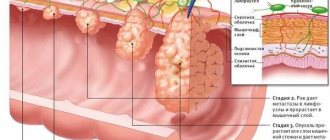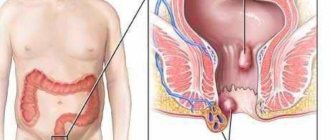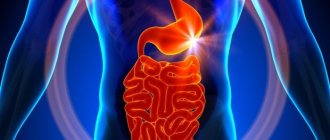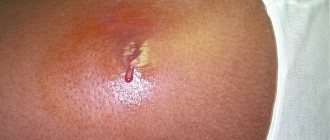Proctologists rightfully consider hemorrhoids one of the most insidious diseases. Indeed, in the initial stages it has practically no symptoms, the person experiences only slight discomfort when visiting the toilet. Rarely will anyone run to the doctor with such a trifle, especially since we are talking about intimate and delicate things.
But hemorrhoids do not sleep. And now traces of blood are found on linen and toilet paper, the pain intensifies, itching appears, and nodes fall out. And there comes a time when the condition worsens so much that you have to go to the doctor in an ambulance. And the diagnosis sounds: stage 3 hemorrhoids. Treatment is surgical only.
Symptoms of grade 3 hemorrhoids
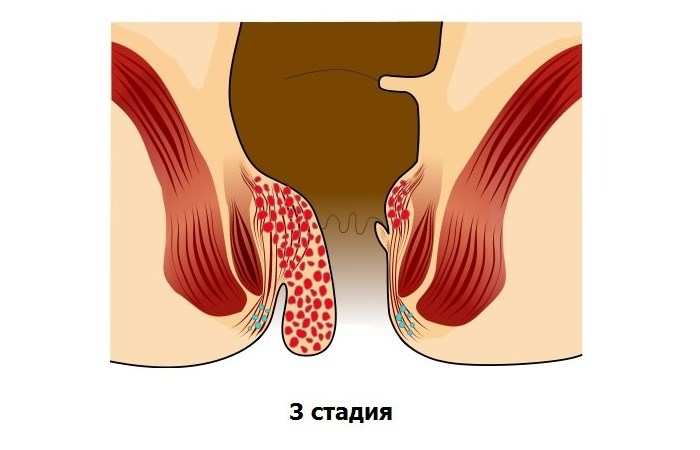
This is how stage 3 hemorrhoids are expressed
To begin treatment for chronic hemorrhoids of the 3rd degree, you need to understand what signs are inherent in the disease during this period. I would like to immediately make a reservation that the disease cannot begin immediately from stage 3. In any case, it is preceded by two steps, during which it is much easier to get rid of hemorrhoids. But people often miss precious time because they feel ashamed and cannot see a doctor, resulting in chronic hemorrhoids of the 3rd degree, which, alas, is not so easy to cure.
The initial stage is characterized by the internal course of the disease. That is, it is quite difficult to visually notice the manifestations of the disease.
As a rule, the initial stage is characterized by the appearance of blood in the stool. Blood may also remain on toilet paper that a person uses to wipe the anus after bowel movements. If you immediately consult a doctor, you can cure hemorrhoids at this stage using ointments, gels, tablets and rectal suppositories. And, special nutrition and herbal baths will help speed up the healing process. If it was not possible to get rid of hemorrhoids, and it has progressed to the next stage, then you will be faced with hemorrhoids that will begin to “fall out” from the rectum. At the second stage, they can be reduced or reduced using special medications. However, without doing anything, you will soon get chronic hemorrhoids of the 3rd degree. At this time, the inflammatory process is actively occurring both inside and outside, and it is no longer possible to straighten hemorrhoidal cones. At this stage, the patient begins to experience a feeling of discomfort and severe pain. Now acute pain will accompany the patient not only during exercise or walking, as in the first and second stages, but now it will have to be experienced even while at rest.
Chronic grade 3 hemorrhoids can cause anemia due to blood loss during bowel movements. To summarize, if you notice the following symptoms:
- Prolapsed hemorrhoids;
- Itching and burning in the anus;
- Pain (during bowel cleansing and after, when walking and at rest).
This means that you have chronic grade 3 hemorrhoids, treatment of which should be started as soon as possible.
Treatment of hemorrhoids with laser
Using a laser, you can get rid of internal, external or combined hemorrhoids at stages 2 and 3 of the disease. The nodes are cauterized with a laser beam and disappear; the place where they were located is tightened with connective tissue.
The method has undeniable advantages:
- The procedure is absolutely painless and bloodless;
- Time: no more than 30 minutes;
- There are no scars or scars;
- At the same time, you can get rid of rectal fissures;
- The patient does not need hospitalization; at the end of the procedure he goes home;
- Lack of rehabilitation period;
- The procedure does not require special preparation.
Laser treatment of hemorrhoids has no contraindications. The effectiveness of the method is more than 90%. In some cases, after 5–6 years, a relapse of the disease may occur. The reason in most cases is the patient’s violation of the diet recommended to prevent hemorrhoids.
What methods exist?
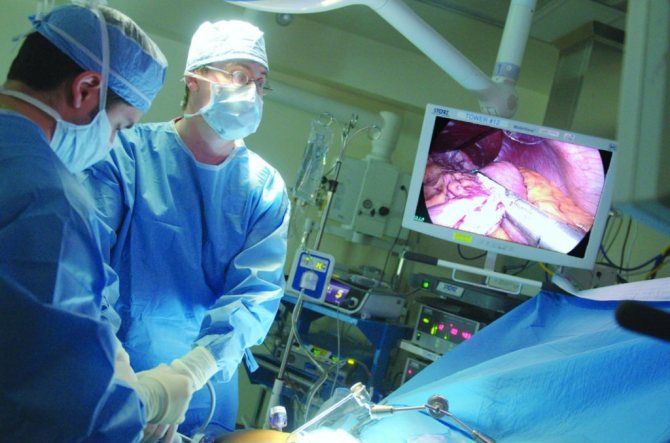
Stage 3 hemorrhoids cannot be treated without surgery
How to cure stage 3 hemorrhoids without surgery? The first question that any sane person will ask after learning about an unpleasant diagnosis. After all, no one wants to fall under the surgeon’s knife. And the doctors themselves believe that the most successful operation is the one that was not needed. After reading a lot of information and consulting with specialists, you will quickly understand that the slogans read: hemorrhoids of the 3rd degree, treatment without surgery! – nothing more than a myth and a publicity stunt. Unfortunately, in this case it is impossible to do without the intervention of a surgeon. Treatment of stage 3 hemorrhoids without surgery is simply not possible. Drug therapy will no longer have the desired effect, and it is used as an auxiliary method, and not the main one.
Don't be scared or panic about this. Modern methods of treating stage 3 hemorrhoids offer different ways to remove hemorrhoids. So the intervention can be minimal. Minimally invasive methods include:
- Infrared photocoagulation. When treated with this method, the nodes are influenced by high temperatures using a special apparatus. This procedure blocks the blood supply to the nodes, which causes them to dry out. Using photocoagulation, you can remove up to 4 bumps at a time, then you should take a two-week break and, if necessary, repeat the procedure;
- Chronic grade 3 hemorrhoids can be cured by resorting to sclerotherapy. The procedure involves the introduction of a specially developed drug into the lumen of the vessel, which will glue its walls, and later the node will resolve.
- Ligation. Treatment of chronic hemorrhoids of the 3rd degree using the ligation method consists of tightening the vessels that supply the hemorrhoid with blood using special latex rings;
- Cryodestruction. Destruction of hemorrhoids by exposing them to low temperatures, which can reach -1960˚C.
- Laser treatment of stage 3 hemorrhoids without surgery. As the name implies, in order to relieve the patient of the disease. The Doctor uses laser beams, just like in a science fiction movie. The laser can be used to cut off the external nodes and cauterize the internal ones. No blood loss is observed.
If none of the listed minimally invasive methods is suitable for some reason or it does not give the expected results, then there is only one option left - surgery for grade 3 hemorrhoids.
In addition to this disarterization technique in modern medicine, we can distinguish:
1. Ligation of nodes using latex rings - the ring compresses the vessel and leads to degeneration of the hemorrhoidal node; 2. Cryotherapy (the effect of low temperatures on the hemorrhoidal node causes necrosis of the node); 3. Infrared photocoagulation of hemorrhoids (the effect is the same as with cryotherapy, but heat is used); 4. Sclerotherapy (injections that lead to local sclerosis of the vessels feeding the hemorrhoid).
All these methods are available and give very good results, almost painlessly and quite quickly.
Hemorrhoids of the third stage - operations
Hemorrhoidectomy or excision of nodes according to Milligan-Morgan is performed in the hospital, in the surgery department. You will be hospitalized for at least 7 days, and full recovery will take a month.
There is another operation called Longo. This operation is more gentle compared to the first one.
Its essence is to remove the affected area of the intestinal mucosa. It is only permissible when there are internal cones. After Longo's surgery, the patient will need no more than a couple of weeks to fully recover.
Symptoms and signs
Experts distinguish four stages of hemorrhoids. The first stage is almost asymptomatic, the patient feels only mild discomfort.

The first three stages of hemorrhoids
The main signs of a developing disease can be seen in phase 2. The patient experiences problems with defecation, feels pain when visiting the toilet, swelling around the anus, and bloody discharge on the underwear are possible.
The third stage of hemorrhoids is characterized by characteristic symptoms that are difficult to confuse with manifestations of another disease.
In the picture: internal and external hemorrhoids (location)
Symptoms of stage 3 hemorrhoids:
- Constant problems with bowel movements, alternating severe constipation with diarrhea.
- The appearance of drops and blood clots in the stool, on linen and toilet paper.
- Pain during and after bowel movements.
- Enlargement of hemorrhoids and their periodic appearance from the anus.
- Burning and itching in the anus.
- Increased swelling of the anorectal area.
- Increased temperature, apathy, irritability.
In the absence of therapy, complications are possible : thrombosis, anemia, the appearance of purulent fistulas, paraproctitis.
Treatment of stage three hemorrhoids should not only relieve symptoms, but also address the very cause of the disease. It is necessary to improve blood flow, restore damaged tissue and block further growth of nodes.
It is important to relieve the patient of constipation. Compressed feces injure the surface of the rectum, and constant tension during bowel movements causes further deformation of the blood vessels.
Is the operation dangerous?
In most cases, such surgical interventions for grade 3 hemorrhoids bring quick relief and do not cause any adverse consequences. At the same time, complications may occur after surgery. It is common to experience heavy bleeding after surgery to treat grade 3 hemorrhoids.
Additionally, after surgery, the affected area may become infected. The suppuration of the wound and the inflammation that accompanies this process causes an increase in body temperature. If the manifestations of this complication persist for more than 2 days, a second consultation with the surgeon is required.
How to treat?
Treatment of stage 3 hemorrhoids at home combines modern drug treatment methods with effective and safe folk remedies.

To relieve inflammation, antibiotics are used in the form of tablets or rectal suppositories:
- You can take Levomecitin or Tetracycline capsules orally.
- They are drunk 3 times a day before meals, the course is calculated by a doctor.
- A good addition is Proctosedyl suppositories containing framecithin.
- Suppositories are especially effective for internal hemorrhoids and anal fissures.
To reduce external knots, it is recommended to use external agents. Effective ointments for stage 3 hemorrhoids contain anticoagulants that help thin the blood, restorative components that promote the healing of external and internal damage, and painkillers that relieve attacks.
Treatment with ointments combines well with tablets and injections, as well as with potent rectal suppositories.

Pictured: Relief Ultra packaging (12 pcs.)
Preparations with the same active ingredient are suitable:
- Relief Ultra, with cocoa butter and shark liver extract,
- Relief Advance,
- Gepatrombin G with heparin, allantoin and dexpanthenol,
- Procto-Glyvenol with tribenoside and lidocaine and others.
These remedies prevent the growth of external bumps, relieve pain and burning, restore damaged tissue and stop bleeding.
Treatment at home
Traditional methods can be combined with drug therapy.

Folk remedies help cope with the disease
For advanced hemorrhoids, warm or cool baths with a decoction of chamomile, nettle, wormwood, oak bark, calendula or eucalyptus leaves help.
For purulent abscesses and microcracks, lotions made from freshly squeezed aloe juice are useful; natural sea buckthorn oil will help relieve swelling and inflammation.
Compresses made from raw grated potatoes give a good softening and analgesic effect; they are made in courses of 7-10 days.
Hemorrhoid removal
It is almost impossible to completely cure stage 3 hemorrhoids without surgery.
In this phase, the proctologist necessarily recommends one of the minimally invasive techniques that have a minimum of contraindications. This operation lasts no more than 2 hours, does not require general anesthesia, and the patient recovers quickly.
Hemorrhoid removal video:
Modern treatment methods offer:
- Ligation with latex rings,
- Sclerotherapy,
- Cryotherapy,
- Disarterization.
Tying the nodes stops their nutrition and causes spontaneous death with subsequent rejection. This technique gives a real chance to cure stage 3 hemorrhoids without surgery.
Some types of surgical interventions are contraindicated in case of thrombosis, extensive inflammation or chronic blood diseases; the attending physician must choose the appropriate technique.
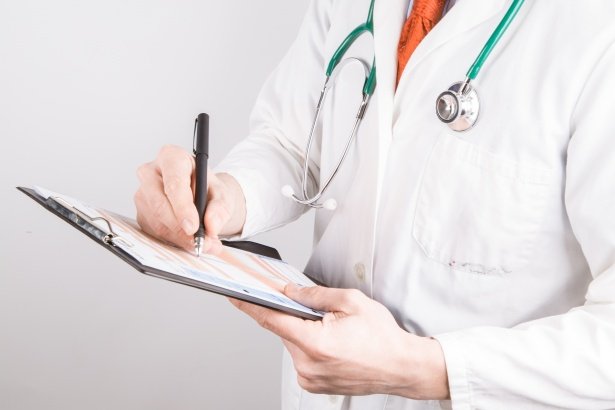
Do not neglect professional advice from a specialist!
Hemorrhoids of stages 3 and 4, complicated by anal fissures, tissue necrosis and purulent fistulas, are removed using a laser or scalpel in a hospital setting.
In a classic hemorrhoidectomy, general anesthesia is used, and the wounds are sutured using absorbable threads.
After removal of overgrown cones, a course of antibiotics and long-term treatment with venotonics are required to prevent relapses.
Is it possible to treat third degree hemorrhoids without surgery?
The operation frightens most people suffering from hemorrhoids. They are afraid of pain or a long recovery period after surgery. For this reason, the operation is delayed and thus only complicates the situation. Modern medicine has several new techniques that allow you to get rid of the problem of hemorrhoids without surgery in its traditional sense. In 1995, a technique for disarterization of hemorrhoids was developed in Japan. It took doctors another 10 years to improve the technique, in addition to disarterization, and supplemented it with tightening of hemorrhoidal cones.
Practice shows that this technique not only helps to get rid of existing hemorrhoids, but also prevents the appearance of new ones. The technique works perfectly at the level of the 2nd and 3rd stages of hemorrhoids, although it can also be used at the fourth stage. A contraindication for disarterization is the presence of complications such as paraproctitis and thrombosis of hemorrhoids. Dearterization is carried out in a hospital setting, the procedure itself takes from 15 to 30 minutes.
The essence of the procedure is as follows. First, an anoscope is inserted into the patient's anus, which, using ultrasound, accurately determines the location of blood vessels in the area of the hemorrhoid. As a rule, from 2 to 6 arterial vessels approach one node. The doctor tightens all these vessels using an anoscope and a special material for dressing (its peculiarity is that after a certain time it will resolve on its own). The ends of the threads are pulled together in a special way so that the knot decreases in size and is removed from the lumen of the intestinal passage.
After the procedure, the patient is most often left for 2-3 days under the supervision of doctors in the hospital. After two to three weeks, deprived of blood supply, the hemorrhoidal node decreases in size, connective tissue forms in it, and over time the node simply disappears. Among the undoubted advantages of the method, the absence of wounds, and therefore pain, should be noted. It is also very important that the recovery period is quite short, and the patient quickly returns to his work activity.
Prevention
Lifestyle correction will help prevent the further development of hemorrhoids.
It is necessary to exclude all provoking factors:
- Smoking and alcohol
- Strength sports, weight lifting,
- Passive lifestyle,
- Frequent stress
- Harmful products.
The patient should walk more in the fresh air, do therapeutic exercises and strengthening Kegel exercises daily, give up alcohol and follow a gentle diet.
Removal of stage 3 hemorrhoids is not a guarantee of complete recovery; if the regime is violated, new lumps may form and the disease may recur.
Treatment at home should continue after surgery.
Treatment of the disease
Treating hemorrhoids at home when it is diagnosed in the third stage is almost impossible. In this case, emergency surgical assistance, that is, surgical intervention, is already required. In modern medicine, several methods of surgical assistance are used in the treatment of hemorrhoids. Hemorrhoidectomy – removal of hemorrhoids. This operation is performed under spinal anesthesia. Despite the fact that the method has been used for more than 80 years, there are a number of contraindications for such an operation.
Subbotin's bandage. This method involves applying special rings to the stem of the hemorrhoid. Blood does not flow, the node dries out after a while and falls off.
Surgical treatment of cracks. It is performed under local anesthesia by removing cracks in the sphincter.
How to treat hemorrhoids in the third stage, by what method, is determined by the attending physician based on preliminary diagnosis and the severity of the disease. After surgery, there will be long-term rehabilitation with diet.
If the patient does not adhere to all the recommendations of the attending physician, a relapse may occur. Traditional medicine is useless in this case. They can only be used as prophylactic agents during the recovery period.
Reviews
Anna, 45 years old: “I have stage 3 hemorrhoids, they prescribed a combination treatment without surgery. I take Detralex, painkillers, and prescribed suppositories with heparin and lidocaine. There is no deterioration, but there are no significant improvements either. I am planning ligation or other micro-operation, the doctor says that it is not necessary yet. I’ll probably make up my mind soon.”
Daniil, 57 years old: “I have been suffering from hemorrhoids for a long time, I have it chronically. I can’t go to the toilet normally without laxatives, and bumps fall out from time to time. I don’t know what to do anymore. I am treated with folk remedies, I do baths, enemas, potato compresses. It helps, but not for long. I started taking pills (Venarus), and it seemed to feel better. The proctologist says that the problem cannot be solved without surgery, but I’m not ready yet. I’ll take another course with ointments, and then we’ll see.”
Nina, 32 years old: “The only pregnancy ended with hemorrhoids, after childbirth the disease continued to develop. For 3 months I tried to cure stage 3 hemorrhoids without surgery, took pills and applied ointments, then I decided to undergo cryotherapy. I’ll say right away that after the operation it doesn’t hurt for a long time, about 3 days and that’s it. It helped, now I don’t remember the disease, but I take vitamins and phlebotonics for prevention 2 times a year.”
source
Symptoms
If at the initial stage you may not pay attention to minor bleeding and itching in the anorectal area, then the symptoms of the third stage cannot be ignored.
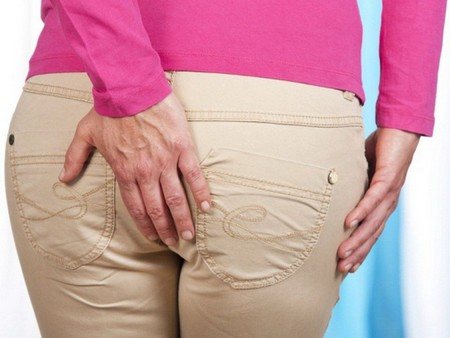
- The same unpleasant symptoms persist, but in a more pronounced form - discomfort in the anal area, itching, burning.
- Defecation is almost always accompanied by bleeding and pain. Sometimes the pain is so strong that only a painkiller can relieve it.
- The most striking symptom of the third stage of hemorrhoids is prolapse of nodes. They gradually increase in size and appear outward during bowel movements, lifting weights, standing idle for a long time, sitting on an easy chair, sneezing, coughing. Unlike stage 4 hemorrhoids, the nodes can be straightened on their own; they stay inside. Loss does not occur at rest.
- The presence of stage 3 hemorrhoids can be determined by the appearance of the sphincter. It becomes inflamed, increases in size, and becomes deformed. There is presence of mucus.
At this stage of the disease, the likelihood of complications increases - the addition of a secondary infection through cracks, pinched nodes, tissue necrosis, thrombosis. In such situations, emergency emergency care from specialists is required, which often ends with surgical intervention.
How to easily rid a child of hemorrhoids? Causes, symptoms, treatment of childhood hemorrhoids
Have you been trying to cure HEMORRHOIDS for many years?
Head of the Institute: “You will be amazed at how easy it is to cure hemorrhoids just by taking it every day...
Read more "
Hemorrhoids in children can cause damage to blood vessels or changes in the functioning of the body. The cause of the development of hemorrhoids in children under one year of age is often: malfunctions of the nervous system, damage or inflammation in the tissues due to the increased sensitivity of the immune system.
Hemorrhoids and children: assumptions and facts
This pathology is considered a disease of adults. Therefore, some doctors cannot accurately answer the question of what kind of hemorrhoids a child develops: internal or external, as in the photo. The internal one is invisible: it is still developing. It is difficult to treat, but there is a way out: carefully monitor the baby’s behavior.
It is dangerous if frequent constipation occurs. This increases the risk of developing internal or external pathology. If problems with stool occur before the age of one year or at the age of 2-6 years, then the likelihood of hemorrhoids increases.
Causes of hemorrhoids
The cause of constipation may be dysbacteriosis or an incorrect diet for the nursing mother. The time when your baby starts using the potty is also important. This is not easy for a child from one to two years old, because parents offer the potty after a certain time, and not when the child really wants to go to the toilet. Sometimes mothers do not allow the baby to get out of the potty and wait for him to do what they want him to do. A long stay on the potty complements crying, the pressure in the abdominal cavity increases, which provokes the development of varicose veins in the pelvis.
Hemorrhoids occur in a child between the ages of one and three years if the rectum is injured by hard feces. As a result, burning and itching occurs in the rectal area. Discomfort causes the child to scratch the area that hurts. This causes inflammation of the anus and redness, as in the photo.
Sometimes hemorrhoids are a hereditary pathology. A four-year-old child has no constipation, normal gastrointestinal function, and symptoms of the disease appear due to venous insufficiency in the lower rectum. This could be causing the problem.
How to detect and treat hemorrhoids
If your baby complains of itching and pain in the butt, take a closer look at what the anus looks like. External hemorrhoids can be recognized immediately, while internal hemorrhoids are diagnosed at a later date. Hemorrhoids are an adult disease that very rarely appears in children.
More often, this disease develops in adolescents who had problems with bowel movements in early childhood. Therefore, you need to pay attention to the prolonged crying of children under two years old, because it may indicate that the first signs of a juvenile delicate problem have appeared.
In children under 5 years of age, signs of the disease are rarely observed. Therefore, if the first symptoms of the disease appear (pain in the anal area), you need to consult a doctor. If you look at a photo of the initial stage of hemorrhoids in children and compare it with a photo of the disease in adults, you can see strong external differences in the course of the disease.
The first risk factor is constipation. It appears in children at different ages. If this problem occurs, you need to make bowel movements easier.
To do this, it is necessary to introduce into the diet foods and additives that dilute feces.
When a child experiences discomfort in the rectal area, do not wait for improvement, but consult a doctor immediately. Specialists will conduct examinations and tests. If the cause of hemorrhoids is a congenital pathology of the venous plexus, it is important to detect this as early as possible. Then the situation can be kept under control.
For hemorrhoid treatment to be successful, it is necessary to identify the cause of the disease. This is the only way to treat the disease. If symptoms of hemorrhoids are detected, immediately consult a doctor and begin treatment immediately. Attempting treatment on your own will not bring the desired results and may even worsen your health.
Symptoms

Children under 6 years of age with gastrointestinal diseases often develop hemorrhoids. Parents can diagnose it if they observe:
- sharp pain in the anus;
- drops of blood in stool;
- external nodes that protrude from the rectum;
- swelling of hemorrhoidal cones when straining.
Hemorrhoids in a photo do not always look the same as in reality, because at different stages the disease manifests itself in its own way. When the disease enters the active phase, a foreign body appears near the anus, burning, itching. If your child scratches his butt and often changes his position in the chair, pay attention to his state of health.
If a child cries a lot or screams for a long time, the abdominal muscles contract, which leads to a loss of their tone, causing varicose veins. And when a baby has hemorrhoids, the disease is hereditary.
If hemorrhoids appear in children before the age of three, the provoking factors are: poor diet, abuse of carbonated drinks, and fast food. As a result, constipation and diarrhea appear, and the functioning of the gastrointestinal tract is disrupted. This is what provokes the development of the disease.
In adolescents, the causes of the development of the disease are the following: physical inactivity, poor diet, bad habits (smoking, drinking alcohol).
How to cure hemorrhoids
At the initial stage, hemorrhoids are not scary, they can be easily treated with conventional therapy. But treatment must be prescribed by a doctor. Correct diagnosis and proper selection of medications based on age are the key to recovery and the ability to avoid recurrence of the disease.
To ensure effective treatment, you need to maintain hygiene of the rectal area and compare the anus of a sick child with a photo of a healthy one. The diet should include food with fiber and water. If your baby is constipated, give laxatives. Daily exercise is useful for newborns (it will improve blood circulation). The child’s menu should not contain soy and a minimum of iron, because these substances slow down the healing process.
To eliminate many problems and reduce the risk of developing hemorrhoids in a baby, it is necessary to combat constipation. Watch the video to see how to do it correctly:
Hemorrhoids can be treated with pharmaceuticals: surgery is necessary if there is a hereditary pathology.
Sometimes doctors combine two methods of treatment: traditional and scientific. To treat childhood hemorrhoids, you can do:
- baths with string, calendula, chamomile;
- enemas with rose hips.
To treat hemorrhoids quickly and successfully, you need to use homeopathic suppositories for hemorrhoids for children. They do not contain artificial components and are as safe as possible for health.
Parents should remember that any treatment method can only be used on the recommendation of a doctor.
Nobody knew, but hemorrhoids can be treated in just a piece of cake, take the usual one...
Hemorrhoids go away within a week, and the “bumps” dry up in the morning! Before going to bed, add 50 grams to a bowl of cold water...
Course of the disease in children
It is difficult to notice hemorrhoids in a one-year-old child. If he cries when defecating, you should be wary. Sometimes the anus takes on an unusual convex shape. Treatment should begin immediately.
At the age of two years, hemorrhoids can be diagnosed during bowel movements: the child sits on the potty and strains hard. The burning sensation during bowel movements causes pain, so the baby becomes hysterical. After using the toilet, parents need to check the stool: is there blood in it? You also need to examine the anus: the patient has a visible vascular network, as in the photo. At three years of age, there is a latent form of hemorrhoids: the child may not cry, so parents need to regularly examine the child’s feces and anus. Is the rectum already damaged? The anus will be convex.
When a child speaks well, it is easier to understand the presence of an illness: he will probably complain of illness himself. If the disease is not treated on time, recovery will take a long time and will bring a lot of worry to the baby and parents.
Who said that hemorrhoids are difficult to treat?

Until scientists and pharmacists invented baby suppositories for hemorrhoids. Therefore, adult medications can be used, but only after consultation with a pediatrician. For treatment to be effective, it is necessary to use an integrated approach, giving the child not only medications, but also adjusting nutrition, sleep patterns, and physical activity.
Adults need to wash the child's anus with cool water after each trip to the potty. This will strengthen the blood vessels, increase their tone, and relieve congestion in the pelvis.
You need to increase the amount of fruits and vegetables in your child’s diet. Give water on an empty stomach. This should become the rule. This way you will help your child get rid of hemorrhoids and create powerful conditions for preventing the disease. If the intestinal microflora is disturbed, it is necessary to restore it. You also need to teach your baby to go to the toilet quickly and always wash his hands after stool. When the anus looks like the healthy child in the photo, you can stop taking the medications. But only after the doctor's permission.
Below you will find links to all articles on our website Lechenie-Gemorroja.com. To search by word, press ctrl+f.
What does grade 3 hemorrhoids look like?
The disease has several forms, the external symptoms are somewhat different in each of them.
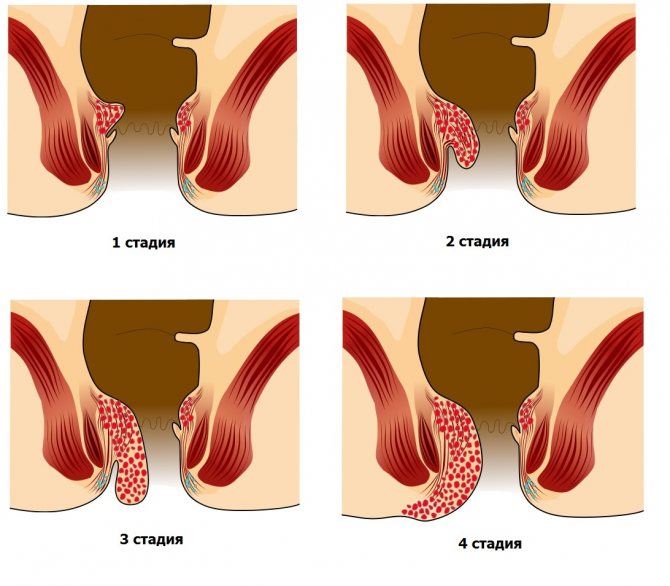
- Internal hemorrhoids are characterized by the development of pathology on the inner wall of the sphincter. The nodes gradually increase in size, but are not visible from the outside. They can be seen by a specialist during an instrumental examination, or by the person himself when the nodes begin to fall out. Internal hemorrhoids are accompanied by severe pain during bowel movements, bleeding, and the sensation of a foreign body inside. Externally it manifests itself as inflammation of the sphincter, deformation, color change, and the presence of mucus.
- Stage 3 external hemorrhoids can be seen with the naked eye. The anorectal area becomes inflamed, mucus appears, the sphincter increases in size, becomes deformed, and a bluish color appears. Inflamed hemorrhoids resembling lumps are visible.
- Combined hemorrhoids are characterized by an increase in hemorrhoids outside and inside. The most severe form of the disease, requiring different approaches to the treatment of pathology.
A specialist can determine the presence of stage 3 hemorrhoids by visual examination. But to assess the severity of the disease, an instrumental examination is required.
Stage 3 hemorrhoids, treatment during pregnancy
The vast majority of women carrying a child face the problem of hemorrhoids to one degree or another.
The causes of the disease are as follows:
- Stagnation of blood in the vessels of the lower abdomen, provoked by fetal pressure;
- Weight gain;
- Sedentary lifestyle;
- Problems with intestinal motility;
- Changes in hormonal levels.
Most often, expectant mothers experience hemorrhoids of stages 1 and 2, which are practically asymptomatic and are discovered at an appointment with a gynecologist. In these cases, it is enough to follow a diet and perform some physical exercises. However, there are cases when pregnant women are diagnosed with stage 3 hemorrhoids. What needs to be done in such cases, what treatment will be most successful?
To treat advanced hemorrhoids in pregnant women, complex therapy is used, combining the use of general-purpose drugs with local agents - ointments, gels and suppositories. It is strictly forbidden to use medications or use traditional methods during pregnancy without consulting a doctor, since many drugs lead to increased tone of the uterus and loss of the child.
Surgical treatment is carried out only in emergency cases - in case of heavy bleeding or thrombosis of hemorrhoids. In most cases, they try to postpone the operation until the postpartum period. If it is impossible to do without surgical intervention, then they resort to gentle, bloodless methods.
Is treatment possible without surgery?
Treatment methods for late stages of hemorrhoids are somewhat different from the first two. External remedies in the form of creams, ointments, lotions, and suppositories are ineffective. They are used only as concomitant medications on the path to recovery. They relieve the external manifestations of the disease - itching, burning, pain, stop bleeding, but the enlarged nodes do not disappear.
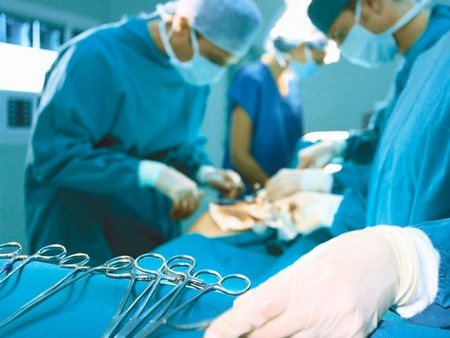
However, surgery does not guarantee complete recovery or absence of relapses. Treatment must be comprehensive. Enlarged nodes are removed using minimally invasive methods, and treatment is continued with medications and folk remedies. In parallel with this, they make adjustments to lifestyle, nutrition, and normalize intestinal function. Only with maximum effort on the part of a person can a positive result be achieved.
At home, you can achieve a reduction in the size of hemorrhoids in the early stages of the disease. Therapy for more severe forms involves the use of minimally invasive methods, which, in general, can hardly be called surgery. The procedure is carried out for several minutes under local anesthesia. The person goes home to continue treatment after receiving specialist advice. Therefore, if there is a question about a classic operation with a scalpel, general anesthesia, you can do without it at stage 3 of hemorrhoids.
Drug treatment of stage 3 hemorrhoids
Medications for stage 3 hemorrhoids are prescribed only to eliminate individual manifestations of the disease. They are divided into local preparations - ointments, creams, gels and rectal suppositories and general action - tablets and injections. What medications can eliminate the symptoms of stage 3 hemorrhoids?
According to their pharmacological effect, they are divided into the following groups:
- Painkillers: Suppositories with adrenaline, Anestezol, Neo-Anuzol, Relief; ointments: Troxevasin, Proctosan, Fleming ointment; tablets: Detralex, Hemoroidin, Phlebodia.
- Venotonic drugs: Help strengthen the walls of blood vessels and reduce their permeability, relieve swelling. Troxerutin gel, Troxevasin ointment, Ascorutin tablets, Vasoket, Venarus.
- Hemostatic drugs: Suppositories with propolis, with belladonna extract, Relief; Heparin ointments, Gepatrombin; tablets Vikasol, Procto - Glivenol.
- Laxatives: Gutalax, Regulax, Duphalac.
After the main symptoms of the disease have been eliminated, the coloproctologist chooses a method by which the patient will be relieved of the nodes. This can be minimally invasive methods or surgery.
Folk remedies
Such medications cannot get rid of stage 3 hemorrhoids, but they relieve the patient from pain and discomfort, facilitate the process of defecation, stop bleeding, and prevent the addition of a secondary infection.

Baths
The most common methods of treating any form of hemorrhoids are sitz baths. It is preferable to make cold ones in the first half of the day. Cold stops bleeding, eliminates pain, and increases the elasticity of the sphincter muscles. Warm baths are done before bed or if it is impossible to go to the toilet. Warm water relaxes muscles and normalizes blood circulation. The procedure must be carried out for 20 minutes daily for 14 days.
Compresses
In second place are lotions. Fold gauze into several layers, soak it in a decoction of medicinal herbs, or apply oils and grated vegetables. Apply to the sore spot, put cling film on top, and secure with underwear or adhesive tape. It is preferable to leave it overnight. You can apply pharmaceutical ointment to the gauze, then its effect will last as long as possible.
Effective recipes
There are many popular remedies for treating hemorrhoids. You can use anyone.
- Dissolve potassium permanganate in water so that the solution turns out to be light pink. Water is used for washing, compresses, and sitz baths.
- Cut a candle from a raw potato, grease it with medical Vaseline, and insert it into the rectum. Grate the potatoes onto a fine grater, place on gauze, and apply to the sore spot as a compress. You can use fresh juice. Carrots, beets, and viburnum also have healing properties.
- Freeze ice cubes in the form of suppositories and use them to relieve pain and stop bleeding.
- Mix chamomile, calendula, St. John's wort, nettle, thyme, and oak bark in equal proportions. Pour boiling water over it and leave in a closed container for half an hour. The decoction is used for sitz baths, lotions, and frozen in molds.
- Lubricate the anus with calendula and sea buckthorn oil several times a day.
- Mix honey with cinnamon and lubricate the problem area several times a day. The ointment relieves painful symptoms and improves blood circulation.
Traditional medicines as an independent therapeutic agent give good results only in the first stages of the disease, in this case they are used additionally.
Treatment
Since it is extremely dangerous to leave stage 3 hemorrhoids without treatment, it is necessary to consult a proctologist at its first manifestations. In addition to an external examination and analysis of the existing symptoms of hemorrhoids, the specialist prescribes laboratory tests of stool to identify blood inclusions. Using an anoscope, existing internal hemorrhoids are examined. Other methods can be used to diagnose grade 3 hemorrhoids.
If there are contraindications for surgical treatment, therapy is carried out without surgery. First of all, venotonics are selected to improve the condition of blood vessels and reduce hemorrhoids. Drugs of this type used for grade 3 hemorrhoids include
- Detralex.
- Phlebodia 600.
- Venarus.
- Troxevasin.
- Aescusan.
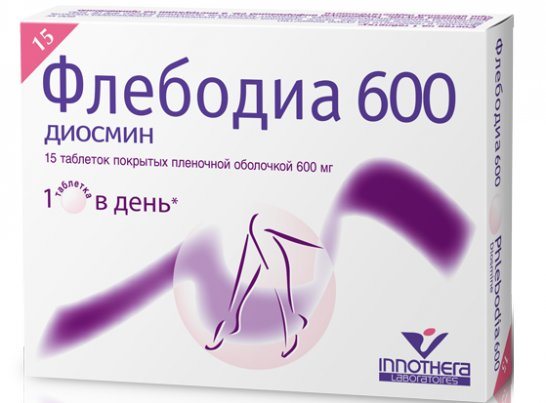
Many of these drugs are not only available in tablet form. There are also ointments and suppositories on sale, which, thanks to contact with hemorrhoids, can achieve a better effect. To reduce the risk of blood clots and eliminate blood stagnation, anticoagulants are often prescribed to thin the blood.
The drug treatment regimen for grade 3 hemorrhoids includes antibiotics, antispasmodics, analgesics and other drugs to relieve the manifestations of the disease. Among other things, it is necessary to follow the doctor’s recommendations regarding diet and hygiene procedures. To relieve symptoms, you can use some folk remedies, including baths.
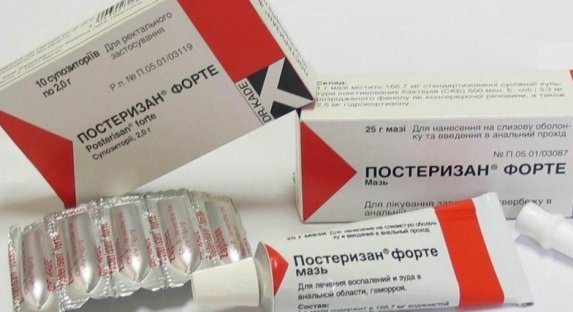
Considering the severity of manifestations of grade 3 hemorrhoids, in most cases a combination of surgical and conservative treatment methods is required. When treating this pathological condition, minimally invasive methods are often used, after which patients quickly recover and can return to normal life. The most commonly prescribed procedure is ligation and disarterization of hemorrhoids. Each minimally invasive intervention option has its own characteristics.
To remove internal cones for grade 3 hemorrhoids, ligation of the nodes with special latex rings is most often performed. This procedure involves pinching the stem of the hemorrhoid. This results in blood being prevented from entering the lump. After a certain period of time, the enlarged hemorrhoidal node dies off, and a small scar forms in its place. Ligation procedures can be performed several times until all nodes are completely eliminated.
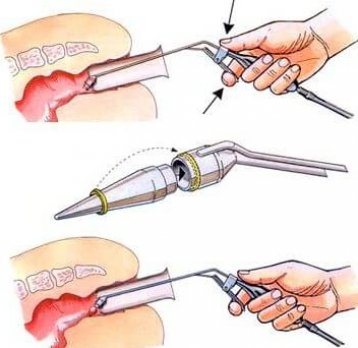
Another commonly used minimally invasive method for treating hemorrhoids is desarterization. This procedure is carried out under Doppler monitoring. The formed cone is stitched with a special polypropylene thread. After this, the node is ligated. In one procedure, no more than 4–6 vessels are disarterized. Minimally invasive surgical interventions can be performed under both general and local anesthesia. Despite the fact that patients recover quickly after such procedures, there is still an extremely high risk of relapse when using them.
The most effective method of treating the manifestations of grade 3 hemorrhoids is radical surgery to excise the existing hemorrhoid. The procedure is in most cases performed under spinal anesthesia. During the intervention, the doctor uses a clamp to remove the existing hemorrhoidal node out. After this, the blood vessel is pierced and the body of the cone is subsequently excised.
The wound surface is left open to heal on its own. To reduce the risk of infection, a tampon soaked in an aseptic solution is inserted into the rectum.
What happens if you don’t see a doctor in time?
The third stage of hemorrhoids is a serious disease that requires immediate assistance from specialists. The lack of qualified treatment leads to complications, transition to the most complex, life-threatening form - the fourth. The last stage of hemorrhoids is treated exclusively by surgery.
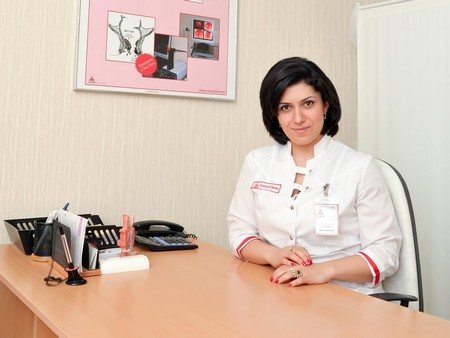
- The presence of cracks in the anus opens the door for pathogens to enter the intestines. Inflammation progresses, mucus and pus begin to be released, accompanied by an unpleasant odor.
- Loss of sphincter elasticity leads to uncontrolled release of feces. Irritation of the rectal mucosa occurs, ulcers, erosions, and wounds appear. The passage of feces during defecation provokes bleeding of varying intensity.
- Loss of nodes is dangerous due to strangulation, thrombosis, and tissue necrosis. This situation requires emergency surgical intervention.
What happens if third degree hemorrhoids are not treated?
In addition to the fact that if treatment is delayed it can lead to the fourth stage of hemorrhoids, it is likely that very serious problems may arise such as:
1. Infringement of the stem of the hemorrhoid, which causes severe pain and thereby literally turns a person off from active activity; 2. Paraproctitis. Through cracks, fistulas and other violations of integrity, the infection enters the perirectal tissue. The inflammation begins to become chronic. Very often, the only option to solve the problem is surgery; 3. Anemia, which develops against the background of severe bleeding.
Proper nutrition and diet
Intestinal diseases are becoming one of the most important provocateurs of hemorrhoids. Provoke relapses of stool disorders, especially constipation. To alleviate the course of the disease and prevent relapses, you must constantly adhere to a diet and eat right.
Products can increase painful sensations and weaken them. You just need to choose the right diet:
- Avoid fried, spicy, salty and fatty foods.
- Eat small meals 6 times a day. Dinner should be no later than 2 hours before bedtime.
- Avoid alcoholic drinks, carbonated drinks, and coffee.
- Do not eat legumes, cabbage, beer, or sweets. These foods cause fermentation and bloating.
- Eat more cereals, vegetables, fruits, drink still mineral water, green tea, dried fruit compote.
- Fermented milk products improve intestinal function, normalize microflora, and eliminate constipation.
Nutrition plays a very important role in the treatment of hemorrhoids, preventing relapses, and recovery after surgery.
source
How to relieve inflammation of hemorrhoids?
Hello! Please help, my anus is inflamed...it’s a very unpleasant sensation. I drink a lot of coffee and it’s very strong, is it harmful? Doctor, give me advice on how to cure this disease! We don’t have a proctologist - you are my hope!!! I'll send you a photo. As a specialist, my problem will be clear to you... Thank you in advance!
There are no comments or reviews for the article “How to relieve inflammation of hemorrhoids?”
Discuss on the forum
Related Posts
There are no comments or reviews for the article “How to relieve inflammation of hemorrhoids?”
- Effective treatment with heparin Cibora
- Medicinal mixture is a new and effective method for treating hemorrhoids
- Botox is an effective and fast method of treating hemorrhoids
- Gut bacteria and their impact on obesity and IBS
- Varicose veins and hemorrhoids, how are they related to each other?
Hello! Please help, my anus is inflamed...it’s a very unpleasant sensation. I drink a lot of coffee and it’s very strong, is it harmful? Doctor, give me advice on how to cure this disease! We don’t have a proctologist - you are my hope!!! I'll send you a photo. As a specialist, my problem will be clear to you... Thank you in advance!

